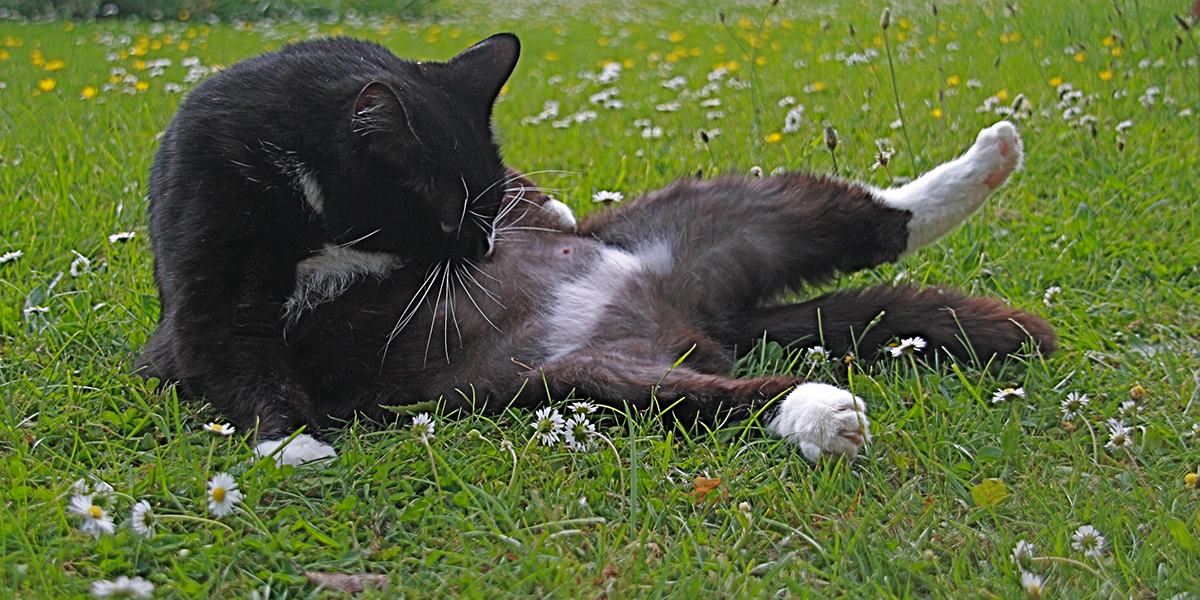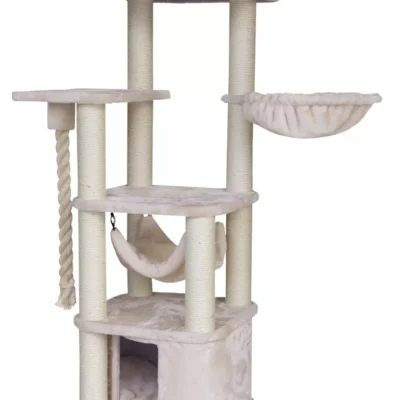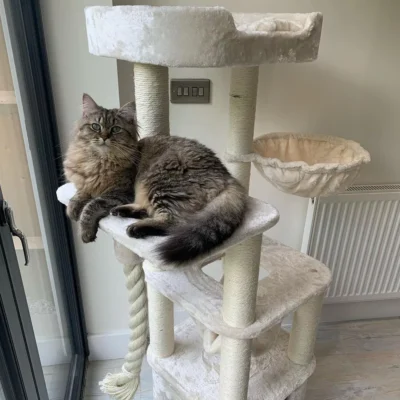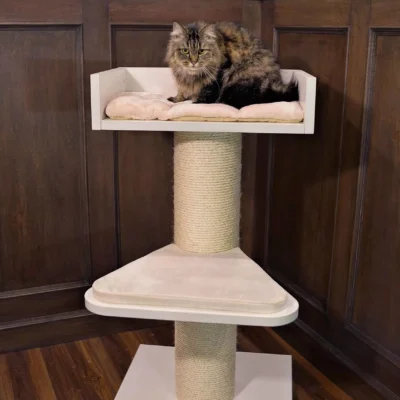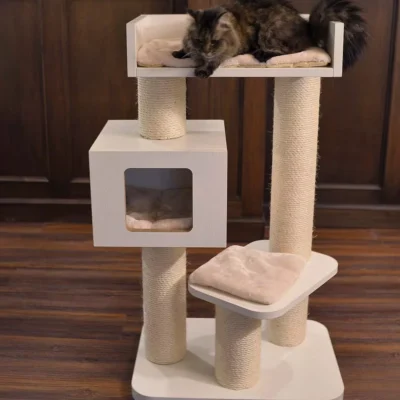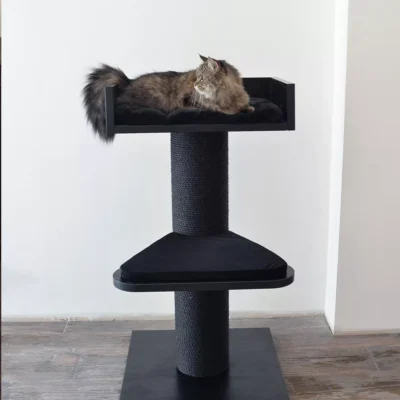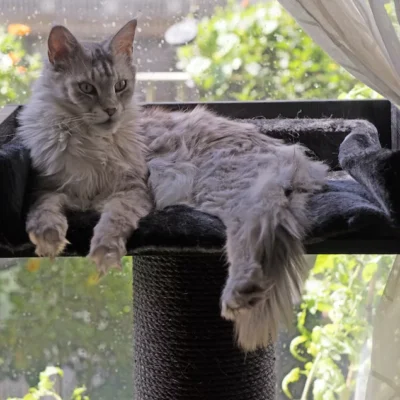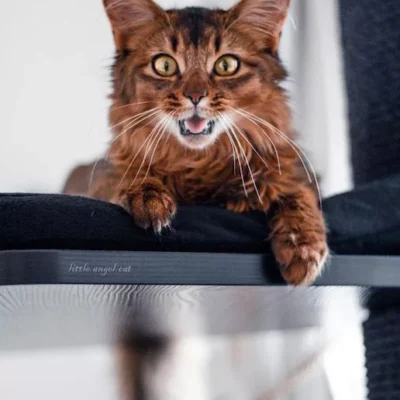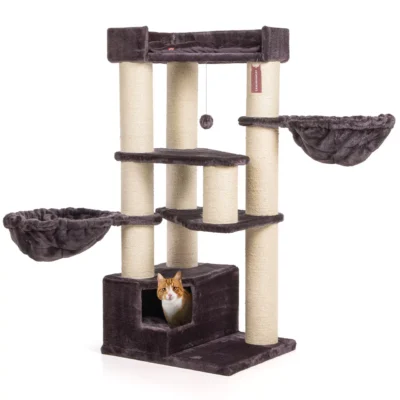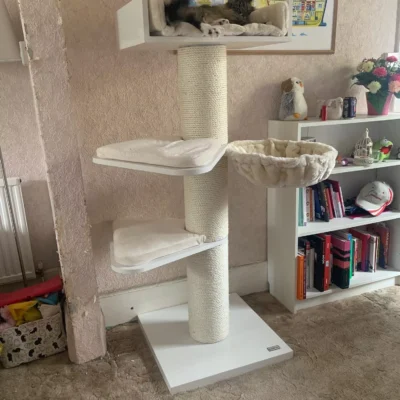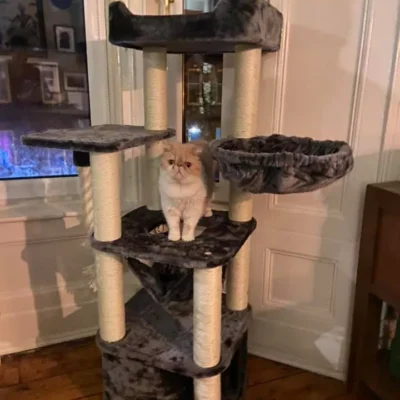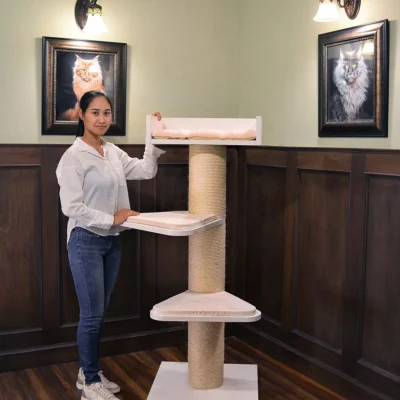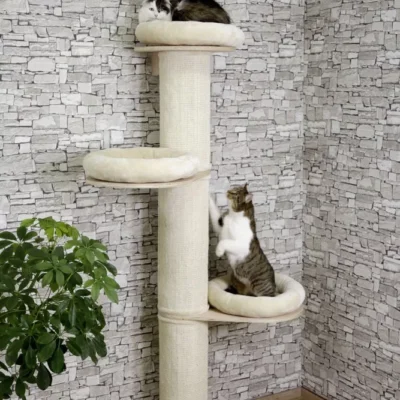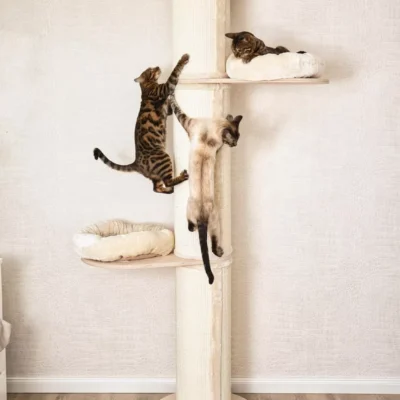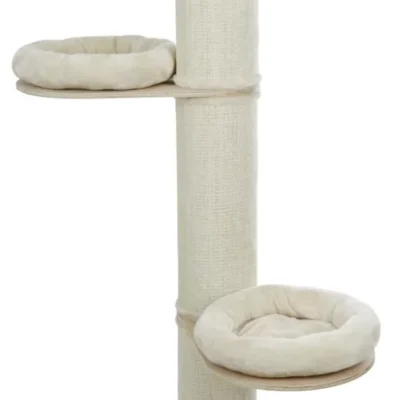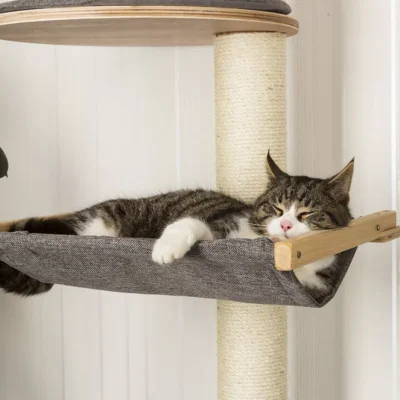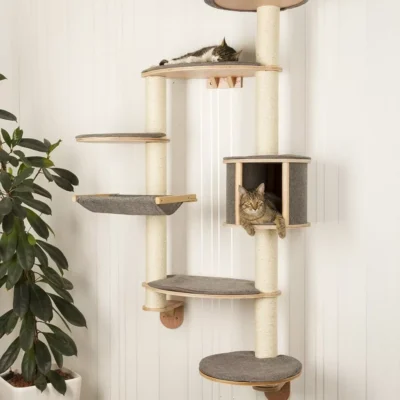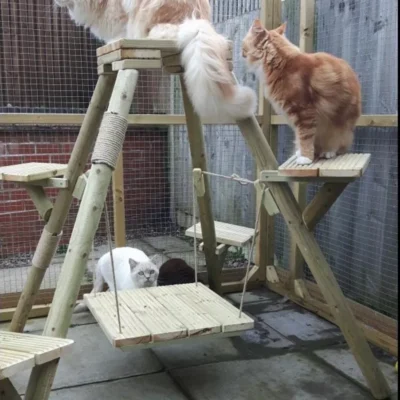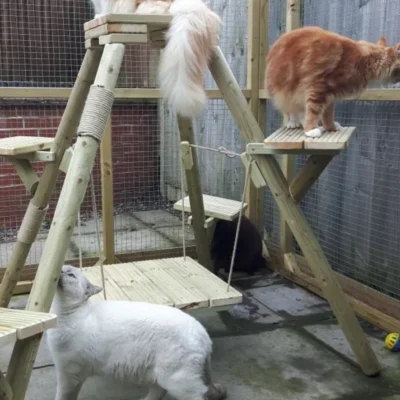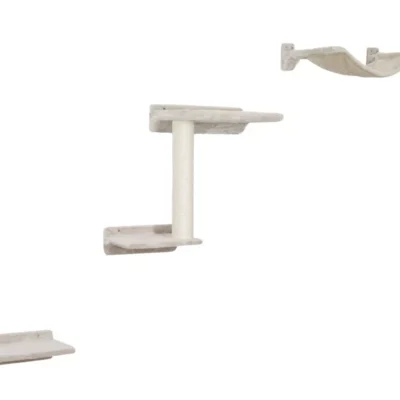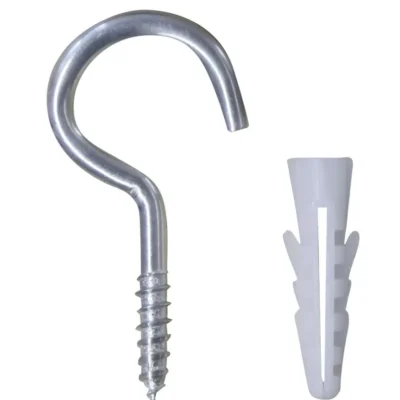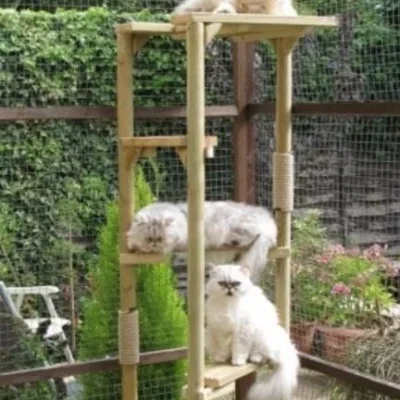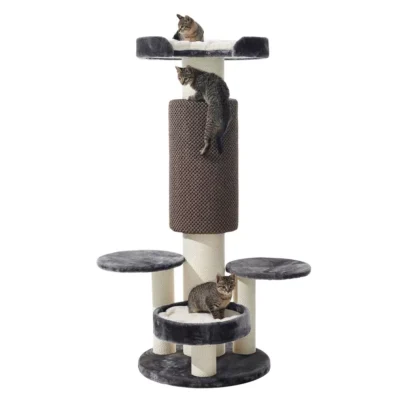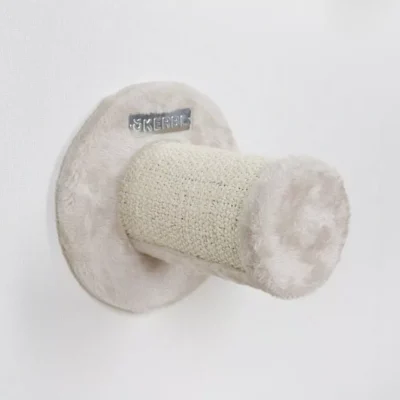0
Overgrooming in cats is a behavior that can raise concerns for cat owners. In this chapter, we will explore the phenomenon of overgrooming, its potential causes, and the importance of addressing it for your cat’s health and well-being.
Grooming is a natural and healthy behavior for cats. It helps them maintain their fur, regulate body temperature, and bond with their owners. However, it’s essential to distinguish between normal grooming and overgrooming.
Normal grooming sessions are typically brief and focused, leaving your cat’s coat in good condition. Overgrooming, on the other hand, involves excessive and often compulsive grooming that can lead to visible changes in your cat’s fur and skin.
Overgrooming can manifest in various ways, both physically and behaviorally. Physically, you may notice bald patches, red or irritated skin, and even sores caused by your cat’s excessive licking or chewing. Behaviorally, overgrooming can lead to increased restlessness, anxiety, or even aggression in some cats. Recognizing these signs early is crucial in addressing the issue effectively.
Addressing overgrooming in your cat is of utmost importance for several reasons. First and foremost, it can be a sign of an underlying medical condition, such as allergies, skin infections, or pain. Identifying and treating these conditions early can prevent further discomfort or health issues for your cat.
Additionally, overgrooming can lead to skin problems, infections, and discomfort, affecting your cat’s overall well-being. Lastly, addressing overgrooming is essential for preserving the bond between you and your feline companion, as excessive grooming can disrupt their normal behavior and interactions.
In conclusion, understanding the concept of overgrooming in cats, differentiating it from normal grooming, recognizing its physical and behavioral signs, and addressing it promptly with veterinary care are all vital steps in ensuring your cat’s health and happiness.
By identifying potential underlying causes and providing appropriate treatment, you can help your cat overcome overgrooming and maintain a healthy and contented life.
Common Causes of Overgrooming
Identifying the root causes of overgrooming in cats is crucial for effective intervention. In this chapter, we will explore the various factors that can contribute to this behavior and how to address them.
Stress and anxiety are significant contributors to overgrooming in cats. Cats are sensitive animals, and changes in their environment, routine, or interactions can trigger stress. This emotional distress may lead to excessive grooming as a coping mechanism.
To help your cat manage stress and anxiety, consider providing a stable and predictable environment, offering hiding spots, and engaging in interactive play to reduce their anxiety levels.
Allergies and skin conditions can be common triggers for overgrooming. Cats can develop allergies to various environmental factors, such as pollen, dust mites, or certain ingredients in their food.
Skin conditions like dermatitis or fungal infections can also cause itching and discomfort, leading to excessive grooming. Identifying the specific allergens or skin issues through veterinary examination is essential.
Your vet may recommend dietary changes, medication, or specialized shampoos to alleviate symptoms and reduce overgrooming.
Parasites, particularly fleas, can be a source of irritation for cats. Flea infestations can cause intense itching and discomfort, prompting cats to groom excessively in an attempt to relieve the itching.
To prevent parasitic infestations, it’s crucial to implement a regular flea prevention program recommended by your veterinarian. Additionally, treating your home environment for fleas is essential to break the life cycle of these parasites.
In conclusion, understanding the potential underlying causes of overgrooming in cats, including stress, allergies, skin conditions, and parasites, is essential for addressing this behavior effectively.
By identifying the specific triggers and seeking veterinary guidance, you can help your cat find relief from overgrooming and improve their overall well-being.
Identifying Stress and Anxiety
Identifying stress and anxiety in cats is crucial for providing them with the care they need. In this chapter, we will explore the common signs and behaviors that indicate your feline friend may be experiencing stress or anxiety.
Cats can exhibit various signs when they are stressed or anxious. These signs may include changes in behavior, such as becoming more withdrawn, aggressive, or vocal. Cats often seek hiding spots when they are stressed, and stress can lead to changes in litter box habits, such as urinating outside the box.
Some cats may overgroom when stressed, leading to skin issues. Stress can also affect a cat’s appetite, causing them to eat more or less than usual. In some cases, cats may display aggressive behavior toward other pets or even their owners when stressed.
Cats are sensitive to changes in their environment, and even minor alterations can affect their well-being. These changes may include moving to a new home, rearranging furniture, or introducing new pets or family members. Cats thrive in a stable and predictable environment, so it’s essential to minimize sudden changes whenever possible.
Multi-pet households can present unique challenges for cats. Competition for resources, territorial disputes, or lack of personal space can lead to stress. To foster harmony among your furry companions, ensure they have separate feeding and resting areas, provide plenty of toys and enrichment, and monitor their interactions to prevent conflicts.
Reducing stress and promoting relaxation are essential for your cat’s mental and physical health. Here are some effective strategies:
Create Safe Spaces: Provide hiding spots or quiet areas where your cat can retreat when they need solitude. Routine and Predictability: Maintain a consistent daily routine for feeding, playtime, and sleep.
Environmental Enrichment: Offer toys, scratching posts, and interactive play to keep your cat mentally stimulated. Positive Associations: Use treats and praise to create positive associations with experiences that may cause stress.
Consult a Veterinarian: If your cat’s stress or anxiety persists, consult with a veterinarian for guidance and potential medication options.
In conclusion, recognizing the signs of stress and anxiety in cats, understanding how environmental changes can affect them, and implementing strategies to reduce stress are essential for ensuring your feline companion’s well-being and happiness.
Addressing Physical Causes
Allergies and skin conditions can be significant triggers for overgrooming in cats, leading to discomfort and the need for intervention. In this chapter, we will delve into the various types of allergies and skin issues that may contribute to excessive grooming in felines.
Allergies in cats can manifest in various ways, including skin-related symptoms. Common allergens include environmental factors like pollen, as well as food allergies. Skin conditions, on the other hand, may result from infections, dermatitis, or autoimmune disorders. Both allergies and skin issues can lead to itching and discomfort, prompting a cat to overgroom in an attempt to alleviate their distress.
Parasitic infestations, particularly fleas, can significantly impact a cat’s grooming behavior. Flea bites can cause intense itching and irritation, compelling a cat to groom excessively in response.
Over time, this can lead to hair loss, skin inflammation, and even more severe issues. It is essential to understand the effects of parasitic infestations on your cat’s grooming habits and take proactive measures to prevent and address these infestations.
Regular veterinary check-ups are crucial for maintaining your cat’s overall health. These check-ups provide an opportunity for your veterinarian to assess your cat’s skin condition, identify potential allergies or infections, and perform necessary diagnostics. Diagnostic tests may include skin scrapings, blood work, or allergy testing to pinpoint the underlying cause of overgrooming.
Once a physical cause is identified, appropriate treatment is essential to alleviate your cat’s discomfort. The treatment options will depend on the specific diagnosis. Allergy management may involve dietary changes, hypoallergenic diets, or allergy shots.
Skin conditions may require medications like antibiotics or anti-inflammatory drugs. Parasitic infestations can be treated with flea preventatives and deworming medications. Your veterinarian will tailor the treatment plan to address your cat’s unique needs.
In conclusion, allergies, skin conditions, and parasitic infestations can contribute to overgrooming in cats, causing discomfort and distress. Regular vet check-ups, diagnostics, and appropriate treatment are vital in addressing these physical causes and ensuring your cat’s well-being.
Behavioral Solutions and Management
Addressing overgrooming behaviorally involves implementing strategies to reduce stress and anxiety in your cat. In this chapter, we will explore various behavioral modifications and techniques that can help your cat overcome the habit of excessive grooming.
Enriching your cat’s environment plays a pivotal role in promoting their mental and emotional well-being. Cats thrive in stimulating and engaging surroundings. By providing toys, interactive playtime, scratching posts, and opportunities for exploration, you can alleviate stress and reduce the urge to overgroom.
A cat with a mentally and physically enriched environment is less likely to resort to excessive grooming as a coping mechanism.
Seeking professional guidance is often necessary to effectively manage overgrooming. Veterinarians and certified animal behaviorists have the expertise to assess your cat’s specific situation and provide tailored solutions.
They can identify the root causes of your cat’s stress and anxiety and develop a comprehensive plan to address these issues. Whether it’s through behavioral therapy, prescription medications, or a combination of approaches, professional guidance can make a significant difference in your cat’s well-being.
After implementing behavioral modifications, it’s crucial to monitor your cat’s progress closely. Keep a record of changes in their behavior, including grooming habits. If you notice improvements, it’s a positive sign that your interventions are working.
However, if overgrooming persists or worsens, it may indicate the need for adjustments to your cat’s treatment plan. Additionally, maintaining a healthy grooming routine for your cat, which may include regular brushing and grooming sessions, can help prevent future issues and contribute to their overall well-being.
In conclusion, behavioral modifications, enriched environments, and professional guidance are essential components of managing overgrooming in cats. By addressing the underlying causes of stress and anxiety and implementing tailored strategies, you can help your cat overcome this habit and lead a healthier, happier life.
Conclusion
In conclusion, understanding why your cat overgrooms is essential for their well-being and overall health. Overgrooming can be a complex issue with various potential causes, including stress, allergies, skin conditions, and parasites.
By taking the time to unravel the mystery behind your cat’s overgrooming, you can provide them with the care and support they need to lead a comfortable and happy life.
Remember that identifying the root cause of overgrooming may require patience and consultation with a veterinarian or behaviorist. Whether it’s addressing environmental stressors, managing allergies, or treating underlying medical conditions, there are solutions available to help your cat overcome this behavior.
Above all, maintaining a loving and supportive relationship with your feline companion is key. With your understanding, empathy, and proactive approach, you can help your cat feel more relaxed and content, ultimately reducing the need for excessive grooming. Together, you and your cat can find the answers to the overgrooming mystery and enjoy a healthier and happier life together.

